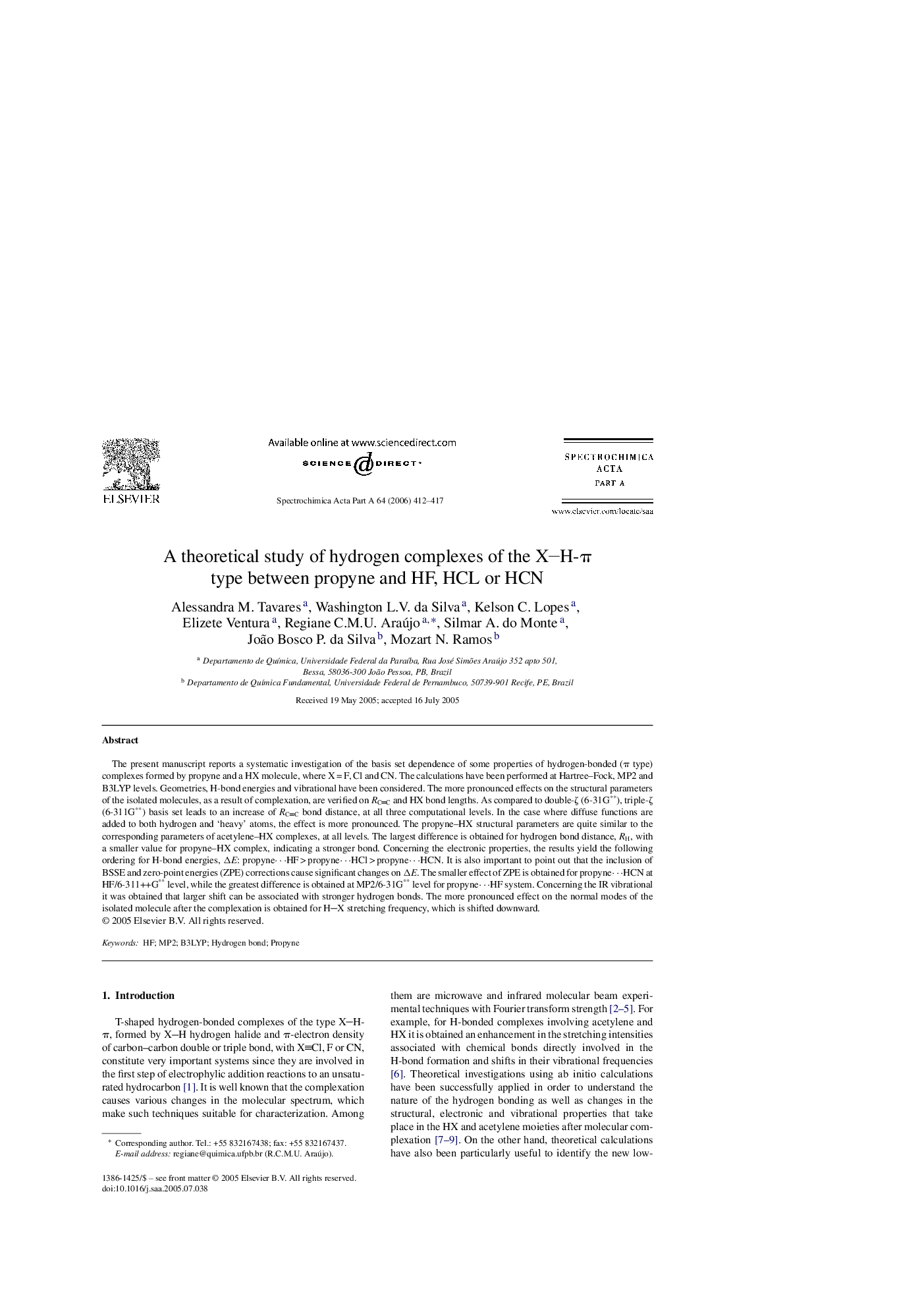| Article ID | Journal | Published Year | Pages | File Type |
|---|---|---|---|---|
| 1236580 | Spectrochimica Acta Part A: Molecular and Biomolecular Spectroscopy | 2006 | 6 Pages |
Abstract
The present manuscript reports a systematic investigation of the basis set dependence of some properties of hydrogen-bonded (Ï type) complexes formed by propyne and a HX molecule, where X = F, Cl and CN. The calculations have been performed at Hartree-Fock, MP2 and B3LYP levels. Geometries, H-bond energies and vibrational have been considered. The more pronounced effects on the structural parameters of the isolated molecules, as a result of complexation, are verified on RCC and HX bond lengths. As compared to double-ζ (6-31G**), triple-ζ (6-311G**) basis set leads to an increase of RCC bond distance, at all three computational levels. In the case where diffuse functions are added to both hydrogen and 'heavy' atoms, the effect is more pronounced. The propyne-HX structural parameters are quite similar to the corresponding parameters of acetylene-HX complexes, at all levels. The largest difference is obtained for hydrogen bond distance, RH, with a smaller value for propyne-HX complex, indicating a stronger bond. Concerning the electronic properties, the results yield the following ordering for H-bond energies, ÎE: propyneâ¯HF > propyneâ¯HCl > propyneâ¯HCN. It is also important to point out that the inclusion of BSSE and zero-point energies (ZPE) corrections cause significant changes on ÎE. The smaller effect of ZPE is obtained for propyneâ¯HCN at HF/6-311++G** level, while the greatest difference is obtained at MP2/6-31G** level for propyneâ¯HF system. Concerning the IR vibrational it was obtained that larger shift can be associated with stronger hydrogen bonds. The more pronounced effect on the normal modes of the isolated molecule after the complexation is obtained for HX stretching frequency, which is shifted downward.
Keywords
Related Topics
Physical Sciences and Engineering
Chemistry
Analytical Chemistry
Authors
Alessandra M. Tavares, Washington L.V. da Silva, Kelson C. Lopes, Elizete Ventura, Regiane C.M.U. Araújo, Silmar A. do Monte, João Bosco P. da Silva, Mozart N. Ramos,
